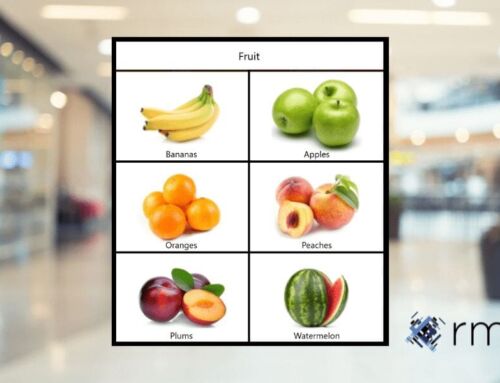Author
Tommy Chapman
Share
Omnichannel Retail: The Basics

Online sales have been growing steadily, year-on-year for the last twenty years. Everybody assumed that 2020 would be no different and that this trend would simply continue. Of course, none of us had any idea what 2020 and subsequent years would have in store, or how it would affect the wider economy and how individuals and organisations can interact with each other and do business. It was predicted that online sales would grow by 11% in 2020. Instead, thanks to COVID-19, shoppers had little choice but to do much of their purchasing online, and it is now believed that online shopping increased by 19% during 2020. After the last couple of years we can be sure that online sales will continue to grow and grow.
What does this mean for retailers? The massive increase in the amount and proportion of online shopping means that becoming an omnichannel retailer is more important than ever before. But what does ‘omnichannel’ actually mean? For this blog, we thought it would be a good idea to take a step back and revisit some of the basics, cut through the industry jargon, and help you see why ‘omnichannel’ isn’t just another buzzword that will soon fade away.
Single-channel retail
Let’s start with the absolute basics; a sales channel is the route by which you sell your products to your customers. If you sell your goods through only one route, you are a single-channel retailer. Traditionally, this route is through a bricks-and-mortar shop. Customers physically enter your store, select the items they want, pay for them and take them away. It’s the way it’s been done for millennia, and it’s one method consumers will continue to use for the foreseeable future.
There are also retailers that, instead of having a physical shop, they sell their products solely via the web. There are advantages to this model of business; it helps keep down overheads, reducing costs and organisational complexity. However, it’s also severely limited. Despite the potential convenience of shopping online, the majority of potential customers still value the experience of shopping in person and prefer to be able to see and handle the item they’re buying before committing to the purchase.
Multichannel retail
As a result, many businesses have branched out and transformed themselves into multichannel retailers. These are usually bricks-and-mortar businesses that have created an e-commerce site, and selling their products online as well as through their physical shop. More rarely, it’s the other way round, when a purely online operation opens a bricks-and-mortar store. It also includes selling through online marketplaces such as Amazon or eBay in addition to physical shops and e-commerce sites, and through social media sites such as Facebook.
Multichannel retail has several advantages. Most obviously, it increases the number of ways in which your customers can buy from you, providing a richer customer experience, increasing their choice, convenience and loyalty, and increasing your sales and revenue. Selling online also allows bricks-and-mortar retailers to utilise the power of online marketplaces and their enormous virtual footfall to capture customers. This is especially true if you sell via multiple online platforms at once.
However, multichannel retail also comes with disadvantages. The most obvious is the increased complexity that it involves for businesses. With each additional sales channel, you require additional sales infrastructure, more staff, often forming a whole separate workforce, and the resources needed to manage multiple inventories, loyalty schemes, and CRM and EPoS systems. All this costs money, cutting into your bottom line.
There’s also a risk that you’ll end up competing with yourself, and cannibalising your own sales, and if you lack the resources to support each of your sales channels properly, customer service could suffer as a result. This could end up harming your brand and reducing customer loyalty.
Omnichannel retail
That leads us onto omnichannel retail. Multichannel retail means selling through multiple channels separately, but omnichannel means selling through multiple channels together, with integrated infrastructures, integrated systems and an integrated workforce to provide a single seamless customer experience.
By integrating in this way, you avoid many of the pitfalls of multichannel marketing. A single integrated EPoS system helps you maintain stock levels across all your sales channels, and means that you can offer alternative ways to buy a product if it happens to be out of stock in your store, on your e-commerce site or vice-versa.
A unified CRM system allows you to collate and combine customer data to give you even better and more detailed insights into customer behaviour. A unified customer loyalty scheme will allow your customers to gain the benefits no matter which way they buy, increasing their loyalty even further. It can also help simplify and strengthen your marketing efforts and helps to avoid the possibility of your different channels competing against each for sales.
By integrating and combining your systems and workforces, you can simplify your business and cut costs, while at the same time increasing revenue. It also allows you to take advantage of services such as those provided by NearSt to help improve the visibility of your products online and encourage people to visit your physical shop.
Conclusion
For a long time, businesses have recognised that they need to diversify their sales channels and become more than single-channel operations if they want to survive in the modern world. However, increasingly retailers are realising the drawbacks of a multichannel approach, and instead moving towards an omnichannel model. This allows you to provide a seamless, unified and personalised customer experience, with a unified brand identity and the same high level of customer service across all sales touch-points. That means happier, more loyal customers and, ultimately, higher sales and increased profits.
Times are changing, and we have to change with them. Omnichannel retail isn’t something you can choose to ignore. It’s not a fad or a buzzword; it’s the way business will have to be done going forwards. The advantages it can bring are many and significant, and the sooner retailers recognise this and adapt, the better things will be for them.
RMS is ready to help you begin your journey to becoming a true omnichannel business. For more information, or to discuss your business needs, contact RMS here or call us on 0800 138 0050.
Key Terms
Share:
Sign up now for news and special offers!
Join our Newsletter
*We are collecting your email information in order to add you to our newsletter recipient list. You can unsubscribe from our communications at any time. You can do this by contacting us or by clicking the unsubscribe button on any of our communications with you.
You can find more information about the details we hold about you and the way we use them in our privacy policy, and you can access this here or we can send you a copy.




